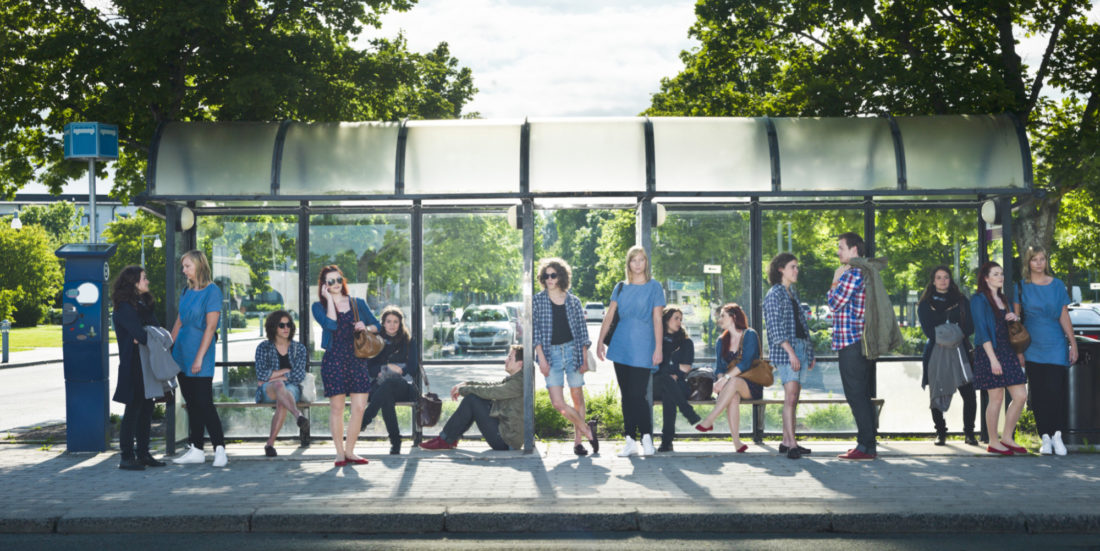New flexible ticketing on buses
Soon you won’t have to worry about how to pay your bus and train fares. All you need is your mobile phone or a bank card.
Bus passengers in the Norwegian town Trondheim, currently pay their fares in cash, either by using the so-called “T:card” or via a dedicated app. Those in Oslo use a different system, and in Bergen they have a third.
“Moreover, the bus companies are having trouble updating and replacing their modules”, says Jan Håkegård at SINTEF ICT. “They use a multitude of IT systems that are expensive both to hook up and operate. The systems are outdated and lack flexibility because the companies are bound to specific suppliers over long periods”, he says.
FAKTA:
- A three-year user-driven innovation (BIA) project funded by the Research Council of Norway.
FourC is the project owner, with SINTEF in the role of research partner. Other participants include the public transport companies AtB and Kolumbus, and the ticketing system developers Valyou and Bambora. Public transport facilitators in Troms (Troms fylkestrafikk) and Nord-Trøndelag (Nord-Trøndelag fylkes samferdselsavdeling) are participating in the project as associate partners. - Budget: NOK 32 million. The Research Council is providing NOK 10.9 million of these funds, with the remainder being sourced from the private sector.
- FourC has nine employees and is based in Trondheim.
Standardisation
Two years ago the Trondheim company FourC came up with the idea of creating an open services platform. Today, the public transport companies AtB and Kolumbus, together with researchers from SINTEF, are joining forces as part of a 3-year project with the aim of making it happen.
By using a shared computer installed in the bus, passengers can pay however they like, regardless of local ticketing systems. What’s more, this leaves the bus companies free to choose the systems they want from the different suppliers.
Hit the bullseye
Managing Director Tor Rune Skoglund at FourC describes the new platform as “a marketplace for new systems”. When the project is completed his company will have to sell the new concept and convince both suppliers and the bus companies that this is a smart solution and that those who are willing to standardise their systems can provide their services on the new platform.
“And it looks as though we’ve hit the bullseye”, says Skoglund. “In meetings, the companies are always talking about expensive systems and how the sector is in a state of chaos. The worst example that I’ve come across was a bus that operated with five different SIM cards, each with its own different data communication system. It sounds to me as if there’s an urgent need for a standardised system”, says Skoglund.
Counting passengers
The project is divided into three components. As well as developing the platform itself, two services will be facilitated. The system will not only check that passengers have paid (ticket validation), but will also count them, providing the bus companies with data they can use to find out how many customers they have and their travel habits.
The counts are carried out by recording passengers via their mobile phones. The phones transmit wireless network packages which the system picks up in the form of anonymised and elongated codes that can then be counted by the researchers.
Challenges
“One of the challenges is to find out whether the passenger counts provided by the system are sufficiently accurate”, says Håkegård. “Many people don’t have a mobile phone, and those carrying both a mobile and a tablet will be counted twice. Some may have their Wi-Fi switched off, and won’t get counted at all”, he says.
However, it appears that ninety per cent accuracy is adequate for calculating meaningful statistics. Tests already carried out on AtB buses demonstrate good correspondence between passengers recorded by the system and those counted manually.
Another challenge linked to passenger counts is protection of privacy. It is currently illegal to store information in such a way that an individual can be identified without his or her consent. This is difficult to comply with in practice using this system. “This is why the data have to be anonymised, and we’re talking to the Norwegian Data Inspectorate about how we can achieve this”, says Håkegård. “We may have to encrypt the data in order to ensure anonymity”, he says.
Future plans
FourC’s idea is that it will be possible to access many different types of services using one and the same device. Passengers will have a choice as to how they pay their fares. For example, environmental sensors can be installed on buses to detect and measure levels of environmental toxins.
A pilot project will be launched in Stavanger this autumn during which passenger movements will be analysed, and a similar set of tests will be carried out in Trondheim in the new year. A pilot for the ticketing system is planned to be launched in 2016, starting with laboratory tests.


